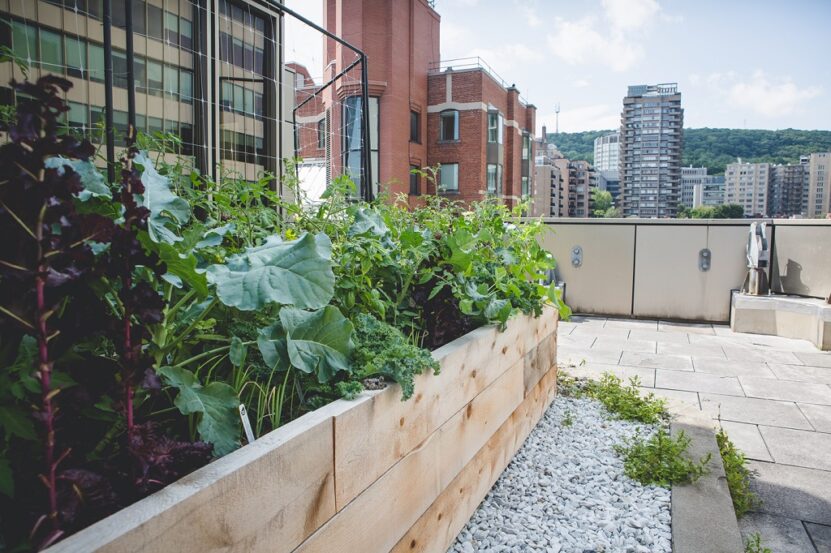Living in a city apartment does not mean you have to give up on your gardening dreams. Whether you want to grow fresh herbs, vibrant flowers, or even small vegetables, a raised garden bed can bring a touch of nature into your urban space.
These compact, versatile setups allow you to maximize limited room while creating a sustainable oasis right at home. Plus, the process of designing and maintaining your own mini-garden offers a rewarding escape from the concrete jungle, giving you a sense of accomplishment and connection to the earth.
Starting a raised garden bed in an apartment requires a little creativity and careful planning, but the payoff is worth the effort. From selecting the right materials to choosing plants that thrive in smaller spaces, each step is an opportunity to tailor your garden to your unique lifestyle.
With the right approach, you can transform your balcony, terrace, or even a sunny corner into a lush green retreat that breathes life into your living space. Let’s explore how you can make this happen.
Use Thin Bricks for a Raised Bed Frame
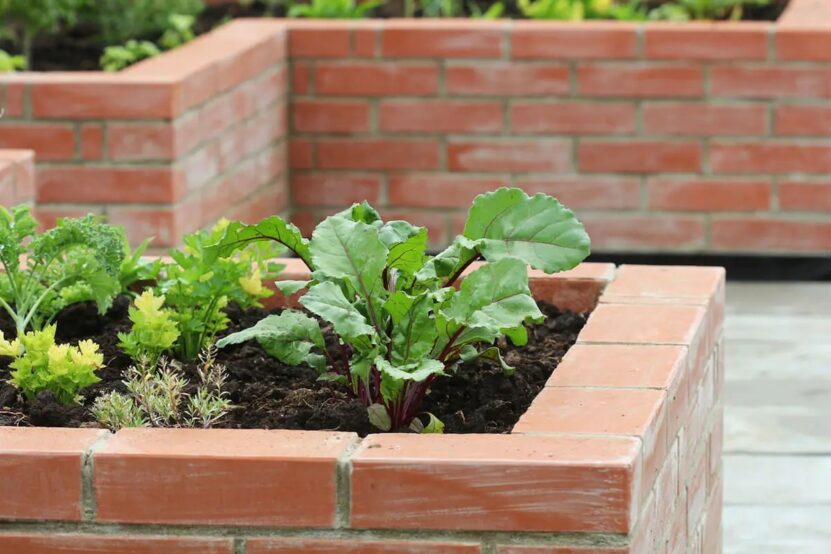
Thin bricks are an excellent choice for building a raised garden bed in an apartment. They are lightweight, which makes them easier to work with compared to traditional bricks. This feature is especially important for balconies or indoor spaces where weight matters.
Thin bricks take up less space than full-sized bricks, making them ideal for compact areas. They are also easy to stack and secure with construction adhesive or mortar, so you do not need special tools or extensive building experience. The important part is to choose a reliable supplier, like Real Thin Bricks.
How to Use Thin Bricks Effectively
- Plan Your Dimensions: Measure the space where you want to place your raised bed. Decide on a size that allows enough room for plants without overcrowding.
- Use a Stable Base: Set your thin bricks on a flat, stable surface to ensure the bed remains secure. Consider using a concrete or wooden platform for added stability.
- Seal the Bricks: Apply a waterproof sealant to the bricks if your garden bed will be outdoors. This prevents moisture damage and helps the bricks last longer.
- Line the Inside: Use a durable liner like landscaping fabric or plastic sheeting inside the bed to protect the bricks from soil and water contact.
Our recommendation is to check if your apartment is insured. You can read more about this in our blog.
Find the Sunniest Spot
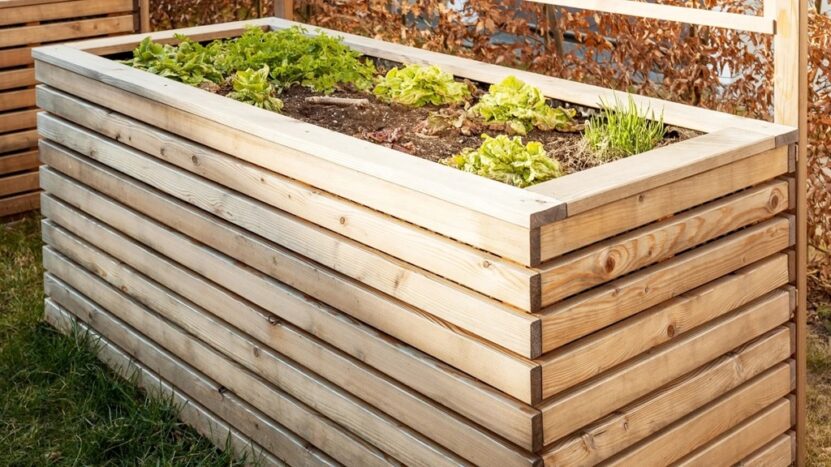
Sunlight is crucial for the success of your raised garden bed, so choosing the best location is key. Most edible plants and flowers need at least 6 hours of direct sunlight daily.
In an apartment, this usually means placing the garden bed on a balcony, near a large window, or in a spot with unobstructed access to light.
How to Identify the Best Location
- Observe Light Patterns: Spend a day tracking sunlight in your apartment. Note the areas that receive the most consistent light.
- Use a Light Meter: If you are unsure, a light meter can measure the amount of sunlight different spots receive throughout the day.
- Maximize Natural Light: Use reflective surfaces like mirrors or light-colored walls to amplify sunlight for shaded areas.
What to Do If Light Is Limited
- Choose Shade-Tolerant Plants: If your apartment has limited sunlight, grow plants like lettuce, spinach, or herbs that thrive in partial shade.
- Supplement with Grow Lights: LED grow lights can provide the necessary light spectrum for plants to grow indoors.
Choose Lightweight Soil
The type of soil you use can make or break your raised garden bed, especially in an apartment setting. A good-quality, lightweight potting mix is ideal because it does not put excess strain on floors or balconies and provides excellent drainage and nutrients for your plants.
Why Lightweight Soil is Best for Apartments
- Easier to Manage: Lightweight soil makes it easier to move or adjust your garden bed if needed.
- Better for Drainage: It prevents water from pooling, which can lead to root rot.
- Nutrient-Rich: High-quality potting mixes are designed to support plant growth without the need for heavy soil amendments.
Tips for Choosing the Right Soil
- Look for Organic Mixes: Choose a mix with organic matter like compost or coconut coir for added nutrients.
- Avoid Garden Soil: Regular garden soil is too dense and heavy for container gardening.
- Add Perlite or Vermiculite: These materials improve drainage and aeration.
Add Drainage Holes or Layers
Proper drainage is essential for keeping your plants healthy. Without it, excess water can accumulate in the garden bed, leading to soggy soil, root rot, and stunted plant growth. Adding drainage holes or a drainage layer ensures water flows out efficiently.
How to Add Drainage to Your Raised Bed
- Drill Holes in the Base: If your raised bed has a solid bottom, drill several small holes to allow water to escape.
- Use a Drainage Layer: Add a layer of gravel, small stones, or broken pottery at the bottom of the bed. This creates space for water to drain away from the roots.
- Elevate the Bed: If possible, raise the bed slightly off the ground to improve airflow and drainage.
Stick to Small Plants
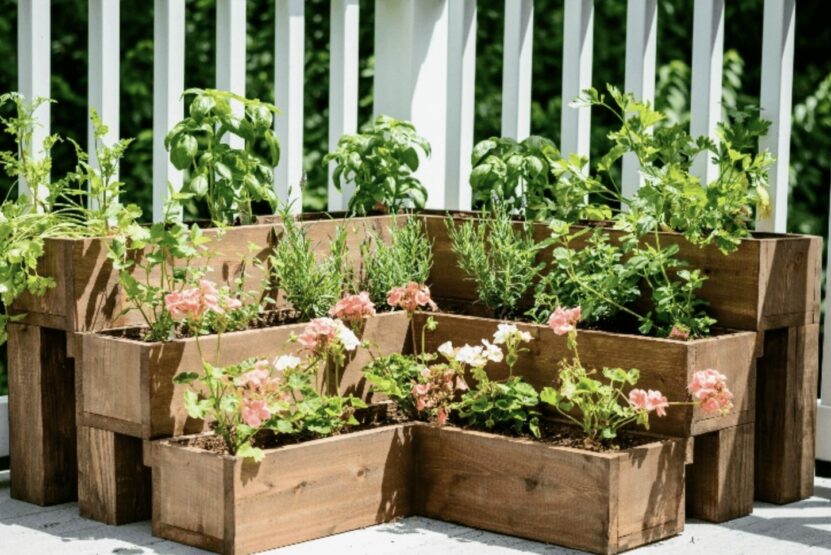
When gardening in an apartment, choosing small, manageable plants ensures your raised garden bed remains productive without overcrowding. Compact plants like herbs, leafy greens, and small vegetables are ideal for urban spaces.
Best Plants for Apartment Gardening
- Herbs: Basil, parsley, cilantro, and mint grow well in small spaces and are easy to maintain.
- Leafy Greens: Lettuce, spinach, and arugula thrive in shallow soil and grow quickly.
- Compact Vegetables: Cherry tomatoes, peppers, and radishes are great for raised beds.
Use Liners to Protect the Floor
A liner inside your raised garden bed can protect your apartment floor from water damage, dirt, and debris. This is especially important for indoor setups or balconies where leaks could cause issues.
Why Liners Are Important
- Prevents Leaks: Liners keep water and soil contained, protecting the surface underneath.
- Protects the Bed: Liners help reduce wear and tear on the frame by creating a barrier between the soil and materials like wood or bricks.
- Keeps Things Neat: They prevent soil from spilling out, making your garden bed easier to maintain.
Go Vertical if Needed
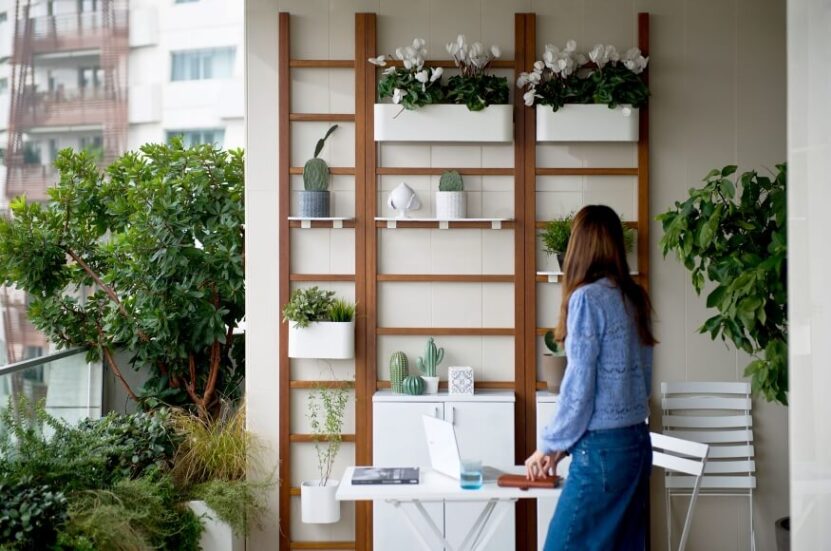
Maximizing space in an apartment often means thinking vertically. Adding height to your garden with trellises, shelves, or wall-mounted planters can increase growing capacity without taking up more floor area.
Vertical Gardening Ideas
- Trellises: Perfect for climbing plants like beans, peas, or cucumbers. Attach them to the raised bed for added support.
- Hanging Planters: Suspend small pots for herbs or trailing plants like strawberries.
- Wall-Mounted Racks: Install shelves or grids on a wall to grow multiple plants in a small area.
Benefits of Vertical Gardening
- Saves Space: Vertical setups make the most of limited room.
- Improves Airflow: Keeping plants elevated reduces crowding and prevents issues like mold or pests.
- Adds Visual Appeal: A vertical garden can serve as a living wall, adding greenery and style to your apartment.
FAQs
Can I Build a Raised Garden Bed Indoors Without a Balcony?
Yes, you can set up a raised garden bed indoors if you have a sunny spot near a window. Use grow lights if natural light is limited. Choose compact, low-maintenance plants and ensure the bed has proper drainage to avoid water damage.
What Tools Do I Need to Build a Raised Garden Bed in an Apartment?
For a simple raised bed, you will need basic tools like a measuring tape, a trowel, a screwdriver (if assembling a wooden frame), and possibly a drill for adding drainage holes. If using thin bricks, construction adhesive or mortar will be useful.
How Do I Control Pests in a Raised Garden Bed in an Apartment?
Pests can be managed with natural methods. Use neem oil, insecticidal soap, or companion planting to deter bugs. For indoor setups, keep the area clean and inspect plants regularly to catch infestations early.
Can I Use Recycled Materials to Build My Raised Garden Bed?
Absolutely. Materials like old wooden pallets, crates, or even sturdy plastic containers can be repurposed into a raised garden bed. Just ensure they are clean and free of harmful chemicals before use.
How Often Should I Water Plants in a Raised Garden Bed?
Watering frequency depends on the plants and environment. Generally, check the soil moisture daily, especially in hot weather or indoors with low humidity. Water when the top inch of soil feels dry, but avoid overwatering. Adding mulch can help retain moisture.
Last Words
Building a raised garden bed in your apartment does not have to be complicated. With the right choices and a bit of planning, you can grow fresh plants in your own space, no matter how small.
Focus on simple materials, compact plants, and practical designs that work for your setup. Start today, and you will have a small, productive garden in no time.

